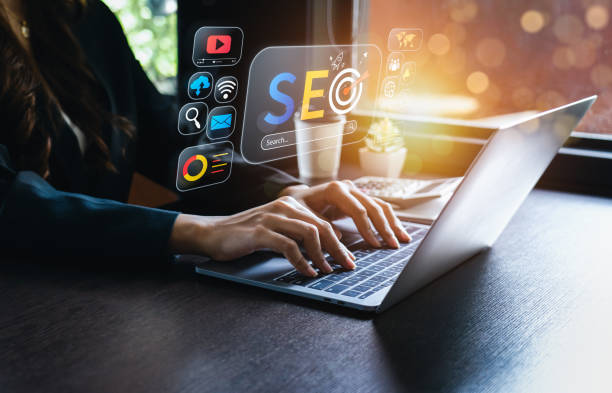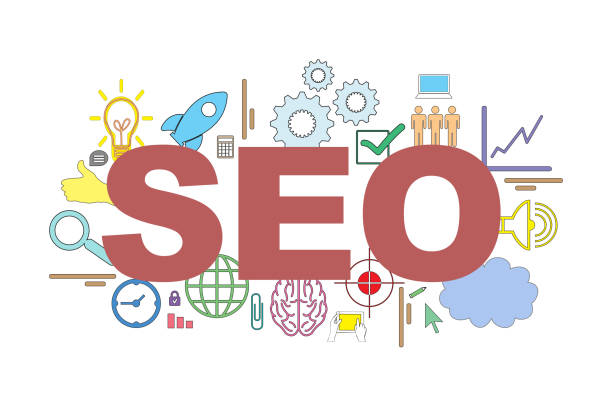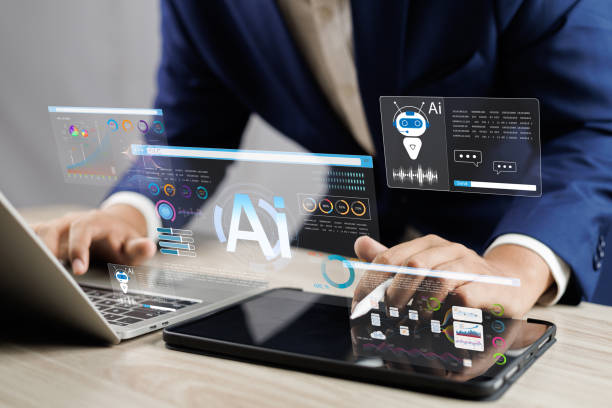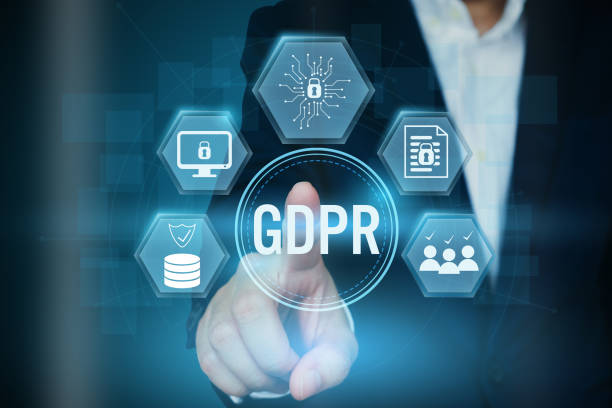What is On-Page SEO and Why is it Important?

On-Page SEO refers to the set of actions taken within a website to improve its ranking in search engines.
These actions include optimizing content, site structure, HTML tags, and other related elements.
SEO consists of two main parts: On-Page SEO and Off-Page SEO.
On-Page SEO focuses on elements you directly control, while Off-Page SEO focuses on elements like link building and social media.
The importance of On-Page SEO lies in its ability to help search engines better understand your site’s content and present it to relevant users.
By optimizing On-Page SEO, you can improve your site’s ranking in search results, attract more traffic, and ultimately achieve your business goals.
In fact, On-Page SEO is like the #infrastructure of a building; the stronger it is, the more stable the building will be.
Content marketing also has a close relationship with On-Page SEO.
On-Page SEO helps you gain more control over your site’s ranking and achieve better results using various techniques.
Improving On-Page SEO not only increases site ranking but also enhances user experience, as optimizing the site’s structure and content allows users to easily find the information they need.
Optimizing On-Page SEO increases customer satisfaction.
Are you falling behind in competition with large online stores?
Rasaweb makes your business online with professional e-commerce website design and increases your market share!
✅ Increased brand credibility and customer trust
✅ Easy shopping experience leading to more sales
⚡ Act now for a free website design consultation!
Keyword Research – The First Step in On-Page SEO

Keyword research is the process of identifying words that users type into search engines to find the information they are looking for.
Choosing appropriate keywords is the first step in On-Page SEO, as these words form the main axis of your content optimization.
Keyword research requires careful analysis and the use of various tools.
To conduct keyword research, you should first compile a list of words and phrases related to your business.
Then, using tools like Ahrefs, Semrush, and Google Keyword Planner, analyze the search volume, competition, and other important metrics for these keywords.
Keywords with high search volume and lower competition are more suitable options for targeting.
Neil Patel has published useful articles in this area.
After identifying suitable keywords, you should strategically use them in your site’s content.
This includes using keywords in page titles, meta descriptions, main text, images, and other related elements.
However, you should avoid excessive use of keywords (Keyword Stuffing), as this can negatively impact your site’s ranking.
Your main focus should be on providing valuable and relevant content for users.
Optimizing Title and Meta Descriptions

Titles and meta descriptions are two important elements in On-Page SEO that are displayed in search results and play a significant role in attracting users to your site.
The page title should briefly and accurately describe the page’s content and include the main keyword.
Meta descriptions should also provide an attractive and relevant summary of the page’s content, encouraging users to click on your site’s link.
Optimizing titles and meta descriptions requires adherence to the following points:
- Appropriate Length: The title should be between 50 and 60 characters, and the meta description between 150 and 160 characters.
- Use of Keywords: The main keyword should be used in the title and meta description.
- Attractiveness and Relevancy: The title and meta description must be attractive and relevant to the page’s content.
- Uniqueness: Each page must have its own unique title and meta description.
Additionally, you can use the Moz tool to analyze your titles and meta descriptions and ensure they are optimized.
| Element | Best Length | Description |
|---|---|---|
| Page Title | 50-60 characters | Should include the keyword and be engaging. |
| Meta Description | 150-160 characters | Should be a summary of the content and enticing. |
Optimizing URL Structure

URL structure is another important factor in On-Page SEO that helps search engines and users better understand the content of your site’s pages.
Optimized URLs are short, descriptive, and include keywords.
Important tips for optimizing URL structure:
- Use Keywords: The URL should include the main keyword of the page.
- Brevity: The URL should be as short as possible.
- Descriptiveness: The URL should accurately describe the page’s content.
- Use Hyphens: Use hyphens (-) to separate words in the URL.
- Use Lowercase Letters: The URL should be written in lowercase letters.
For example, a suitable URL for an article about “On-Page SEO Guide” could be: https://www.example.com/on-page-seo-guide.
Are you worried about your e-commerce site’s low conversion rate and not achieving your desired sales?
Rasaweb is your specialized solution for a successful e-commerce site.
✅ Significant increase in conversion rate and sales
✅ Professional and user-friendly design to attract customer satisfaction
⚡ Ready for a revolution in online sales? Get a free consultation!
Optimizing Website Content

Content is the king of SEO.
Optimizing website content involves creating valuable, relevant, high-quality, and engaging content for users.
Optimized content not only helps improve site ranking in search engines but also increases user engagement and conversion rates.
Important tips for optimizing website content:
- Provide Valuable Content: Content should address user needs and provide useful information.
- Use Keywords: Keywords should be used naturally and strategically throughout the content.
- Appropriate Structure: Content should have an appropriate structure, making proper use of headings, subheadings, paragraphs, and lists.
- Use Images and Videos: Images and videos can make content more engaging and understandable.
- Content Updates: Website content should be regularly updated to provide new and relevant information.
Additionally, you can use various tools to analyze your content and ensure it is optimized.
Optimizing Images

Images play an important role in the attractiveness and improvement of website user experience.
Image optimization includes reducing image size, using the appropriate format, adding alternative text (Alt Text), and properly naming image files.
Optimized images increase site loading speed and help search engines better understand the images.
Important tips for optimizing images:
- Reduce Image Size: Image size should be reduced as much as possible to increase site loading speed.
You can use tools like TinyPNG to reduce image size. - Use Appropriate Format: JPEG, PNG, and WebP are common image formats.
JPEG is suitable for images with many colors, and PNG is suitable for images with graphics and text. - Add Alternative Text (Alt Text): Alt text is a short description of the image that is displayed to users if the image cannot be shown.
Alt text should include the main keyword. - Appropriate Naming of Image Files: Image file names should be descriptive and include the keyword.
Also, using high-quality images relevant to the content can have a positive impact on user experience.
Improving Website Loading Speed

Website loading speed is an important factor in On-Page SEO and user experience.
Sites that load faster have a better ranking in search engines and attract more users.
Improving website loading speed includes optimizing images, reducing the size of CSS and JavaScript files, using caching, and choosing appropriate hosting.
Important tips for improving website loading speed:
- Image Optimization: Image size should be reduced as much as possible.
- Reduce CSS and JavaScript File Size: CSS and JavaScript files should be compressed and optimized.
- Use Caching: By using caching, site content can be stored in users’ browsers, increasing site loading speed.
- Choose Appropriate Hosting: Choosing high-quality and high-speed hosting has a significant impact on site loading speed.
- Use CDN: Using a Content Delivery Network (CDN) can increase site loading speed for users in different geographical regions.
| Factor | Description |
|---|---|
| Image Optimization | Reduce size and use appropriate format |
| CSS/JS Files | Compression and minification |
| Caching | Activate browser and server caching |
| Hosting | Choose high-speed hosting |
Optimizing for Mobile

Today, most users access the internet via mobile devices.
Optimizing for mobile includes designing a responsive website, increasing mobile site loading speed, and providing a suitable user experience on mobile devices.
Mobile-optimized websites have a better ranking in search engines and attract more users.
On-Page SEO on mobile sites is of great importance.
Important tips for optimizing for mobile:
- Responsive Website Design: The site should be designed to automatically adapt to different device screen sizes.
- Increase Mobile Site Loading Speed: Mobile site loading speed should be increased as much as possible.
- Provide a Suitable User Experience on Mobile Devices: Users should be able to easily navigate your site on mobile devices and find the information they need.
- Use Readable Fonts: Fonts used on the site should be readable on mobile devices.
- Avoid Intrusive Pop-ups: Intrusive pop-ups can disrupt the user experience on mobile devices.
Additionally, you can use Google’s Mobile-Friendly Test tool to check your site’s compatibility with mobile devices.
Research shows that 80% of customers trust companies with professional websites more. Does your current site inspire this trust?
With Rasaweb’s corporate website design services, solve the problem of customer distrust and a weak online image forever!
✅ Create a professional image and increase customer trust
✅ Attract more sales leads and grow your business
⚡ Get a free consultation!
Internal Linking

Internal linking is the process of creating links between different pages of a website.
Internal linking helps search engines better understand your site’s structure and identify more important pages.
Additionally, internal linking can improve user experience and increase users’ dwell time on the site.
By performing On-Page SEO and link building, you can easily attract customers.
Important tips for internal linking:
- Create Links Between Related Pages: Links should be created between pages that are topically related to each other.
- Use Appropriate Anchor Text: Anchor text should be descriptive and include the keyword.
- Avoid Broken Links: Broken links should be fixed.
- Use Nofollow Links if Needed: In some cases, it may be necessary to use nofollow links.
A good strategy for internal linking is to create links from high-ranking pages to pages whose ranking you want to improve.
The Role of XML Sitemap in On-Page SEO

An XML sitemap is a file that provides a list of all your site’s pages to search engines.
An XML sitemap helps search engines identify and index your site’s pages better and faster.
Creating and submitting an XML sitemap to Google is an important step in On-Page SEO.
Important tips for creating an XML sitemap:
- Include All Important Site Pages: The sitemap should include all important pages of the site.
- Regular Updates: The sitemap should be regularly updated.
- Submit to Google: The sitemap should be submitted to Google via Google Search Console.
In addition to an XML sitemap, you can also use an HTML sitemap to improve the site’s user experience.
An HTML sitemap is a page that provides a list of all your site’s pages to users.
By following these tips and implementing appropriate On-Page SEO strategies, you can improve your site’s ranking in search engines, attract more traffic, and achieve your business goals.
In fact, with proper On-Page SEO, you can have a thriving business.
Frequently Asked Questions
| Question | Answer |
|---|---|
| What is a Meta Title and why is it important in On-Page SEO? | The meta title is the most important element of On-Page SEO, displayed at the top of the browser tab and in search results. This title helps search engines and users understand the main topic of the page and should include the main keyword. |
| What role does the Meta Description play in On-Page SEO? | The meta description is a brief summary of the page’s content displayed below the title in search results. Although it doesn’t directly affect ranking, its attractiveness can increase the click-through rate (CTR). |
| How should keywords be used in page content? | Keywords should be used naturally and relevantly in strategic locations such as the title, headings, first paragraph, and body text. Avoid excessive keyword stuffing. |
| What is the importance of quality and comprehensive content in On-Page SEO? | High-quality, unique, informative, and comprehensive content that addresses user needs is of great importance. Search engines give higher rankings to content that creates real value. |
| What is the application of heading tags (H1-H6) in the On-Page SEO structure? | Heading tags (H1, H2, H3, etc.) are used to structure content and indicate the importance of different sections. H1 is the main title of the page, and each page should only have one H1. Other tags are used for subheadings. |
| How to optimize images to improve On-Page SEO? | To optimize images, use descriptive alt text that includes relevant keywords, reduce image file size without compromising quality, and use meaningful and relevant file names. |
| What are the characteristics of an SEO-friendly URL? | An SEO-friendly URL should be short, readable, descriptive, include main keywords, and be free of unnecessary characters. The URL structure should be hierarchical and logical to be understandable for both users and search engines. |
| How does internal linking help On-Page SEO? | Internal linking, by connecting related pages, helps users and search engine crawlers better understand the site’s structure, transfers page authority, and increases user dwell time on the site. |
| What is the impact of page loading speed on On-Page SEO? | High loading speed is crucial for both user experience and SEO ranking. Slower pages may be ignored by search engines and lead to an increased bounce rate. |
| Why is mobile-friendliness of great importance in On-Page SEO? | Given the increasing number of searches through mobile devices, having a responsive and mobile-friendly site is essential for user experience and ranking in search results (Google’s mobile-first indexing). |
And other services of Rasaweb Advertising Agency in the field of advertising
- Smart Advertising Campaign: Transform user interaction with custom programming.
- Smart Sales Automation: A quick and efficient solution to increase click-through rates by focusing on marketing automation.
- Smart Direct Marketing: A combination of creativity and technology for campaign management through key page optimization.
- Smart UI/UX: A new service to enhance campaign management through custom programming.
- Smart SEO: Revolutionize click-through rates with the help of attractive user interface design.
And more than hundreds of other services in the field of internet advertising, advertising consultation, and organizational solutions.
Internet Advertising | Advertising Strategy | Advertorials
Resources
Complete Guide to On-Page SEO on Modir.irWhat is On-Page SEO and How to Do It?Comprehensive On-Page SEO Training for WebsitesThe Importance of Explanatory Content in On-Page SEO
? Ready to transform your business in the digital world? Rasaweb Digital Marketing Agency, with its expertise in professional website design and SEO, offers innovative solutions for your growth and visibility.
📍 Tehran, Mirdamad St., next to Bank Markazi, Kazerun Jonubi Alley, Ramin Alley, No. 6

